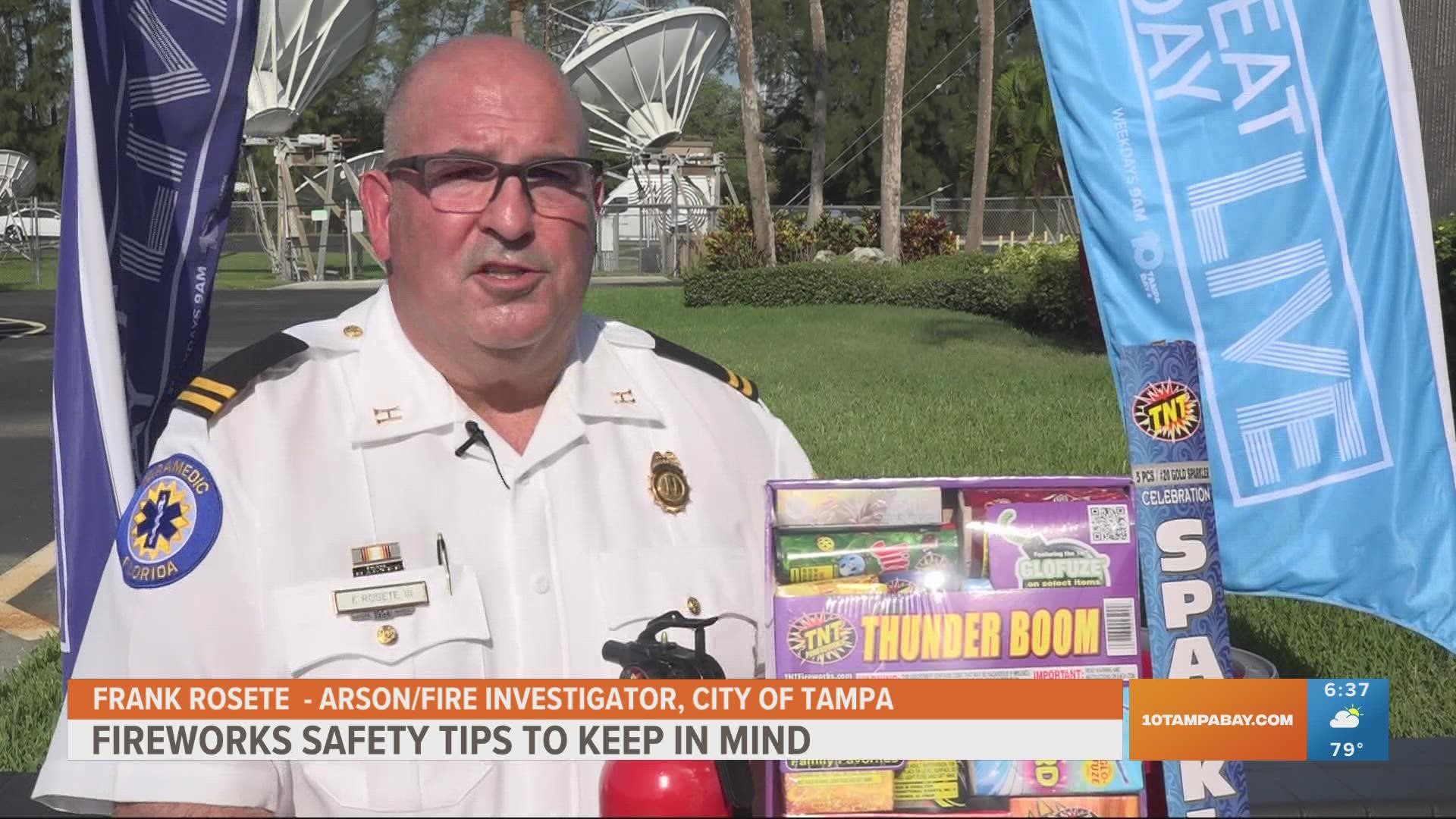TAMPA, Fla. — Fireworks on the Fourth of July? As American as apple pie; however, an increase in injuries related to at-home fireworks is raising concerns over the inherently dangerous tradition.
“In the last 15 years, we've seen an increase of about 25% in the number of fireworks-related injuries,” says Alex Hoehn-Saric, Chair of the U.S. Consumer Product Safety Commission.
Last year alone, there were nine fireworks-related deaths and more than 11,500 emergency room visits nationwide. Injuries to the face, hands and arms are among the most common.
“You see everything from little burns to fingers, hands being destroyed, depending on the size and amount of the fireworks that you are using all the way up to structure fires,” says Frank Rosete, an arson and fire investigator with the City of Tampa, who’s investigated his fair share of fireworks accidents.
The best way to prevent those from happening? Experts say, "don’t light ‘em.”
“Like we always say let the professionals do it, but if you must, follow all the package instructions and be as safe as you possibly can,” Rosete added.
That includes not letting kids handle them, even if they are just sparklers, as those can reach temperatures upwards of 2000 degrees and cause serious burns.
If you are lighting fireworks, make sure you are not under the influence of alcohol and that you are as far away from structures as possible.
You can also remember the helpful acronym, “WOW.”
“W, always have water nearby, O is one at a time, never light off multiple fireworks at the same time. Last W is walk away, walk away quickly, never put your body nearby and never lean over fireworks when you're lighting them,” Hoehn-Saric explained.
If the firework doesn't light the first time, don't try to light it again, dump some water on it and consider it a dud.

